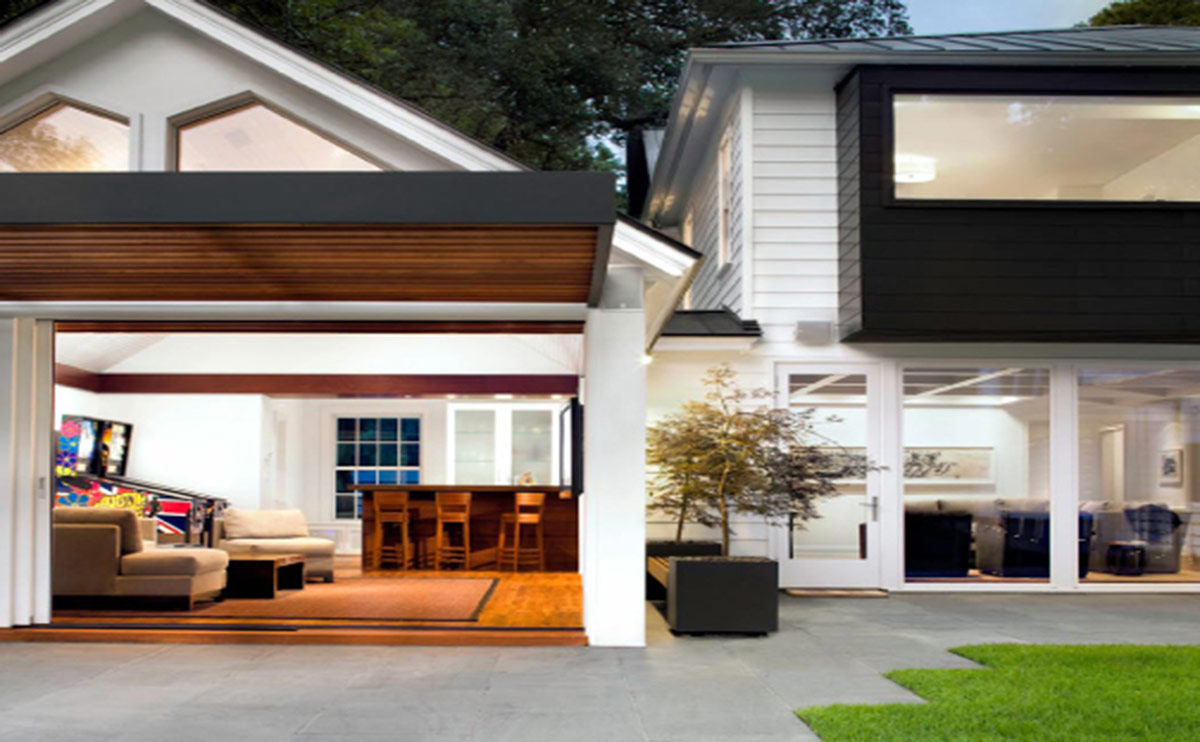Douglas Mcdonald, creator of The Pure House, is bringing the passive house movement to Westport, CT.

McDonald, an adherent to the German passive house movement, is currently working on a nearly 6,000-square-foot colonial mansion in Westport, Connecticut. When it’s finished it will be the first “pure” house in the United States. We caught him over the phone during a break from his work to find out more about this concept and what exactly a passive, or pure, house is.
Modern Farmer: What is a high-performance, “pure” house?
The house can take full advantage of the sun and therefore not require additional heat inputs like oil.
Douglas McDonald: Well it starts with the shell, or what I call a building envelope. You need to start with the best possible envelope, and then fill it with pure and natural things. The people who started this idea, and who perfected it, are the people at the Passive House Institute out of Germany. At The Pure House, we adhere to the passive house logic, and we’re not talking aesthetic qualities, but mathematical concepts of efficiency. The most important step is orienting the house in the best possible location on the lot in terms of heat efficiency, or where it will get the most sunlight. Here in Connecticut, the ideal location is facing south, we do this so that the house can take full advantage of the sun and therefore not require additional heat inputs like oil.
MF: All you have to do is face it in the right direction?
DM: No, it’s not that simple. After you’ve found the ideal orientation, the key is to then design a specific envelope suited for that orientation and geographic location. Say if you were to build a house in Nova Scotia, it would have thicker walls than a house in Boston, or New York.
MF: What makes it, as you say, pure?
DM: The house becomes a pure house in many different ways. One important way is the air inside the house. To meet passive standards the house has be to airtight. This also plays a key role in heating. With an airtight house, the role of an air exchanger becomes very important. The air exchanger in a pure house runs 24/7 and constantly replaces the air in the house with clean, filtered air from the outside. This closed-system design really makes you think about what you fill your house with, and what those items are made out of. It’s a pure house when you’ve specifically chosen items, appliances and furniture to fill your house that are free from toxic chemicals and compounds.
[mf_mosaic_container columns=”3″ captions=”no”]
[mf_mosaic_item src=”https://modernfarmer.com/wp-content/uploads/2014/07/pure3.jpg” number=”1″]
[mf_mosaic_item src=”https://modernfarmer.com/wp-content/uploads/2014/07/pure2.jpg” number=”2″]
[mf_mosaic_item src=”https://modernfarmer.com/wp-content/uploads/2014/07/pure.jpg” number=”3″]
[/mf_mosaic_container]
MF: Are there any visual cues that would indicate to someone walking by that what they’re looking at is a pure house?
DM: Not really. There’s a few subtle things that look a bit different from a traditional house but what we’re trying to do is offer a wolf in sheep’s clothing; especially here in Connecticut. What we’re offering is a product that looks familiar, but is radically different in how it works. One noticeable difference would be that a pure house would have no chimney. It doesn’t need one.
MF: Does the design incorporate the land the house sits on?
DM: Yes, that’s a major part of the process. It all starts back at the orientation phase I mentioned earlier. Any trees or rocks that have to be moved when we’re locating the house will be utilized in the interior design. In Westport we had to remove a few big oak trees, we took them from the land and now they’ll be used as benches for the beautiful dining room table. Not only is it important to use the land around the house but we also try to source as much of our materials as possible from local sources. The idea is to be able to look around the structure and know where specific parts of your house came from. It’s like the farm-to-table movement, only with building materials.
This interview has been edited and condensed.